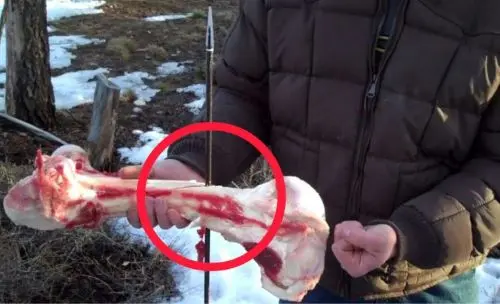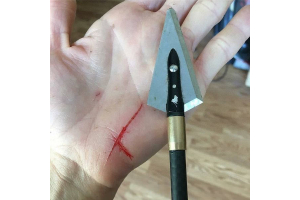The Power of Momentum In Bowhunting

The Power of Momentum - most bowhunters use Kinetic Energy to determine whether their arrows will have enough energy to harvest animals efficiently. That's too bad because kinetic energy doesn't even have a direction. It's a measurement of the TOTAL ENERGY an arrow and broadhead have at a given moment, but it is NOT an indicator of whether your arrow and broadhead set-up has a high probability of penetrating an animal. Momentum on the other hand is the measure of a force moving in a specific direction over a period of time. Momentum tells us how much energy, based on the weight and velocity of the arrow, it is available to use during impact and penetration before it stops penetrating and comes to rest. Momentum is a much better indicator of what we can expect for penetration from our arrows.
Note: Even knowing our momentum is not enough. When discussing penetration the physical characteristics of the arrows and broadheads come into play as well. Read Dr Ed Ashby's Top 12 Penetration Enhancing Factors for the rest of the story.
Consider this, the kinetic energy formula is K.E. = 1/2 m v2
Since the velocity is squared, a relatively small speed increases, bumps your KE very quickly. That seems logical in favor of lightweight, fast arrows, right?
Here's the problem. During arrow flight and especially during arrow penetration, velocity sheds its energy twice as fast as momentum. Lightfast arrows lose energy much faster than slow heavy arrows. That's because heavier slower arrows carry more momentum.
The momentum formula is Momentum = mass times velocity or p = (m * v)
Most people measure kinetic energy at the bow, but for a more relevant number, we should measure at the point of impact shouldn't we?
Another problem is that, upon impact, the faster the object striking another is moving, the more the object being struck resists. In other words, the animal's tissues will resist the penetration of a fast-moving projectile more than a slower-moving projectile. Therefore, it's easier to penetrate animals with slower-moving heavy arrows than with faster lightweight arrows.
Heavy slower-moving arrows lose less energy in flight and during penetration than lightweight fast arrows. This is because of inertia (an object in motion tends to remain in motion.) Think of a golf ball and a ping-pong ball. They're both about the same size but even if the ping-pong ball is launched twice as fast as the golf ball, the ping-pong ball does not have the weight to keep it in motion. It loses its energy much faster than the slower-moving but heavier golf ball. Even at only ten feet away, which would you rather be hit with, a ping-pong ball moving at 300 feet per second or a gold ball moving at 150 feet per second?
When you first launch the ping-pong ball, because the formula is slanted in favor of speed, it may very well have a higher kinetic energy rating. The golf ball however retains its energy because of its higher momentum factor and can deliver downrange where it's needed most.
Try this simple test: Take two lightweight (300-400 grains) arrows; on one, install an 80-grain field point or, to prove a point, no point at all. Throw that arrow as far as you can. Now take the other arrow and install a 315-grain field point. Throw that arrow as far as you can. What happened? The lighter arrow, especially if you used no tip at all, wiggled and wagged, was very unstable, AND didn't travel nearly as far as the more stable, heavier-tipped arrow. Hmmmmmm?
 Now, to really make a point, throw one of our GrizzlyStik Momentum TDT tapered carbon arrows with a 350-grain field point on it. Quite a difference! That's the power of momentum. That's the advantage of forward-thinking.
Now, to really make a point, throw one of our GrizzlyStik Momentum TDT tapered carbon arrows with a 350-grain field point on it. Quite a difference! That's the power of momentum. That's the advantage of forward-thinking.












